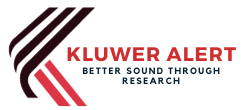7 Amazing Finance Vs. Operating Lease Hacks

Equipment is expensive to buy and keep up, and it doesn’t take long for a better or more advanced model to come out and replace the one you just bought. Since it costs a lot to own and run equipment, many small business owners choose to lease instead. Leasing has advantages that owning doesn’t have, like cheaper monthly payments that are usually made over a long period of time instead of all at once. The popularity of this concept has grown so much that there are options for even aircraft financing these days. In addition, service contracts or extra services are often part of commercial equipment leases. These give company users peace of mind and eliminate the need for in-house expenditure. Finally, leasing can be an option if your business needs new technology or equipment but doesn’t have the money to buy it.
Understanding the Types of Equipment Lease – Finance vs. Operating Lease in 5 Elements
- In a financial lease, the lessor lets the lessee use the lessor’s property for a long time without making regular payments. On the other hand, an operating lease is a type of lease where the lessor lets the lessee use the lessor’s asset in exchange for regular payments over a certain amount of time.
- A financial lease is one that needs to be recorded in the accounting system. On the other hand, an operational lease does not need to be recorded in an accounting system. Because of this, it is often called an “off the balance sheet lease.”
- In financial leases, you can get a tax break for financing costs and depreciation. Under the terms of an operating lease, rent payments are tax deductible.
- In a financial lease, the property or equipment is turned over to the lessee. In an operating lease, the lessee does not become the owner.
- At the end of the agreed-upon time period, a financial lease gives the lessee the option to buy the asset. In the case of an operational lease, there is no such offer.
7 Amazing Finance Vs. Operating Lease Hacks
When deciding what kind of equipment your business needs, you should think about a lot more than just the overall cost of buying or renting. It would be best if you also thought about maintenance, tax breaks, flexibility, etc. Moreover, you should discuss the equipment lease agreement. Here are the most important tips and things to think about when it comes to financing and leasing equipment.
#1 Figure out how it works
The lease could be for cars, industrial machinery, or any other kind of equipment. After the lessor and lessee agree on the terms of the lease, the lessee gets to use the equipment in exchange for making regular payments for the length of the lease. However, if the lessee breaks the rules of the lease or uses the equipment for something that is against the law, the lessor can end the equipment leasing agreement and keep the items that were leased. This also involves several tools like an equipment lease calculator.
#2 Find out What’s in it for You
Be ready to explain in detail how the business equipment will help your company. A company that finances equipment should have a plan for how the equipment will bring in more money and save money. Instead of paying for equipment out of pocket, you can finance or lease it and get tax breaks. Leasing payments and loan payments are monthly outflows that become operational costs and, in the end, reduce the amount of taxable income your business has.
#3 Analyze Rates of New Technology
Equipment buying is beneficial when the technology behind the machinery isn’t likely to change often or when the return on investment is unquestionable. Also, if you plan to use the equipment for a long time, it might be cheaper to take out a loan and purchase it. But if technology is changing quickly in your field, a lease might be a good idea because you can keep upgrading the equipment you lease without much cost.
#4 Combine Leases of Various Equipment
Combine several business equipment purchases into one lease and make a single equipment lease agreement if possible. To make things easy and save money, it’s best to figure out what kinds of equipment your business needs and lease them all at once. If you do this, you might be able to get a better deal than if you did the other.
#5 Check How Much Money is Needed Upfront
Before looking into equipment purchases, you should figure out how much money you can put down immediately. Of course, there are credit or financing options, but they require you to put in a deposit or a down payment upfront. If a business owner doesn’t want to pay for the equipment upfront, they may want to consider equipment leasing. With leasing, you can turn the asset’s total value into monthly lease payments.
#6 Choose the Right Business To Work With
It would help if you always leased equipment from the equipment leasing companies that have been around for a while. For the long-term stability of your business, it’s important to hire your essential business equipment from stable financial institutions. In addition, leases of this kind require a lot of product knowledge, credibility in the industry, and dependability to serve clients well. So, if you want to get these kinds of equipment leases, choose a well-known name in the equipment leasing companies industry.
#7 Before you Choose, Compare
Don’t think that the first equipment leasing company will give you the best terms and deal possible. Instead, take the time to compare prices, lease agreement terms, fees, and the different options you have.
Leasing equipment can be much more expensive in the long run than buying it outright, but it can help small business owners who are short on cash get the equipment they need quickly. There are many benefits to leasing equipment, even though not all leases are the same. With the best tips and tricks mentioned here, you can ace your leasing mattes.



